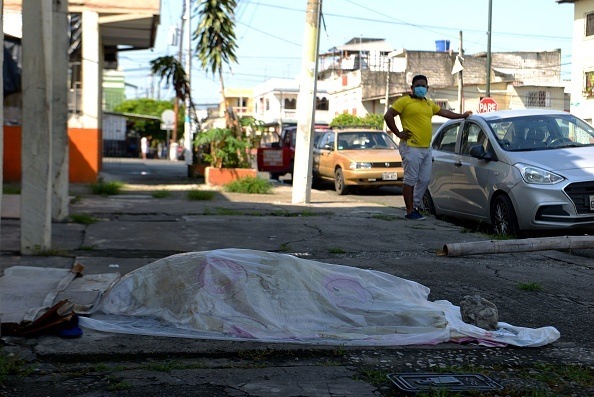RIO DE JANEIRO, BRAZIL – Guayaquil, more than any other Ecuadorian city, is paying for its shortcomings in addressing the coronavirus pandemic.
The country’s economic capital, with a population of 17.5 million, has witnessed Dantesque scenes in recent days.
Bodies have been seen in the streets wrapped in plastic bags. The precarious health system has collapsed, with many professionals infected.

Long lines of vehicles with cardboard coffins formed at the cemetery gates.
And the worst is yet to come. Authorities expect up to 3,500 dead during the pandemic.
Guayas province and its capital, Guayaquil, are home to 73 percent of the nearly 7,300 infected, including 315 deaths, since February 29th, according to official data.
1) Origin
With 2.7 million inhabitants, the port of Guayaquil emerged before the emergency as a vulnerable spot.
The first case was that of a woman who had returned from Spain. Almost half a million Ecuadorians live in that country and in Italy. Many emigrated there because of the financial crisis in the late 1990s.
The flow of travel is intense, particularly in February and March, the school vacation season.
2) Sloppiness
Ecuador “reacted late” to warnings about the spread of the virus around the world, said Daniel Simancas, epidemiologist at the Equinocial Technological University (UTE).
There was also a delay in purchasing tests and epidemiological monitoring was poor.
Mistakes that had in Guayaquil’s social conditions “fertile ground”.
3) Inequality
Although Guayas is the state that most contributes to the country’s production (27 percent), its capital recorded 11.2 percent poverty in December, according to official data.
Unemployment and underemployment stand at approximately 20 percent in the city, which has caused many families to fear hunger due to social isolation.
“People want to go out to produce and this is due to the same productive structure of casual employment found in Guayaquil,” Alberto Acosta Burneo, an economist with the Spurrier consulting firm, told AFP.
Guayaquil sociologist Carlos Tutivén of the Casa Grande University also stressed Guayaquil’s “economic development model”.
In the port, the greatest resistance to the left-wing that ruled the country from 2007 to 2017 was established. But no formula “was powerful enough to solve inequality” in a city where the mansions on Mocolí Island live with shanty towns lacking basic services.
4) Violation
Almost 3,300 people violated the 15-hour-a-day curfew enforced by the government in Guayas.
Albeit with the army on the streets, it is common to see street vendors, most of them without masks and long lines outside the stores, lacking the recommended distancing.
Sociologist Tutivén notes that “locking oneself in a four square meter house with four, five, six people can be suffocating,” he points out in a conversation with AFP.
Epidemiologist Simancas emphasizes that “many wealthy families have also violated quarantine measures”.
5) Mea culpa
Under strong criticism, federal and local governments have acknowledged the serious shortcomings in the management of the crisis.
Mayor Cynthia Viteri, infected with the virus, said that “everyone” is to blame.
“We see our patients lose their lives every day … pregnant women have no hospital to give birth and 100 people have died from lack of dialysis”.
“Not only the health system in the country has collapsed, but also the funeral homes and mortuaries”.
Source: AFP

